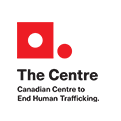Labour Trafficking
Labour traffickers – including recruiters, contractors, employers, and others – use violence, threats, lies, debt bondage, or other forms of coercion to force people to work against their will in many different industries.
Trafficked persons are often promised high-paying jobs, education or travel opportunities, however, when they arrive they forced to work long hours under unsafe and very poor working conditions for little or no money. Labourers are often forced to pay back large (illegal) recruitment fees that are separate from the immigration services fee they can legally be charged.
Traffickers exert complete physical and psychological control over their victims by using abuse, threats, debt bondage, document and money confiscations. Traffickers will lie to individuals and tell them that if they do anything inconsistent with their work permits they could lose status and/or face deportation. Many endure the abuse as they have families and children to support in their home countries.
Men, women, and children have been victims of forced labour in Canada. Some vulnerable populations, like foreign nationals, LGBTQ2S persons and homeless youth are more often targeted by traffickers. In Canada, precarious immigration status, recruitment debt, isolation, language barriers, poverty can create vulnerabilities that traffickers can exploit.
- Some examples of the type of industries where trafficked persons have been identified are construction, agriculture, restaurants, and manufacturing, food processing, nail salons etc
- In some cases, trafficked persons are exploited in illegal businesses or forced to transport drugs for their traffickers.
- Domestic servitude is a type of labour trafficking where trafficked persons are forced to clean houses, do laundry and other domestic chores, care for children and elderly family members, and are often called upon to be available at all times of the day or night. They receive very little or no pay for their work.
In some cases, trafficked persons are underfed and show signs of malnourishment. They may not speak English, no longer have possession of their travel documents or ID. They are often unaware of their rights in Canada or how to get assistance.
Please click here to see a complete list of The Signs of Human Trafficking.
